Food and colors go hand in hand. One of the best ways to make your dishes more palatable is by adding veggies of different colors. But not all food colorings are user-friendly. Some foods like beets are packed with dyes that will stain every surface they touch, including clothes and even your skin. Such stains are hard to remove and the blotch of color stays on your skin no matter how many times you wash it.
To remove food coloring stains from skin you can use baking soda and white vinegar, or use rubbing alcohol or a hand sanitizer. Both toothpaste and shaving creams also do a good job getting rid of many food coloring stains. When the stain is particularly tough, you might need to soak it in baby oil or treat it with salt and lemon.
As with other stains, you need to act fast and be patient. More often than not, you’ll need to repeat the treatment a few times to get the last trace of the food coloring stain out of your skin. Read more to find out how to remove these stains with materials readily available around the house.
What is Food Coloring?
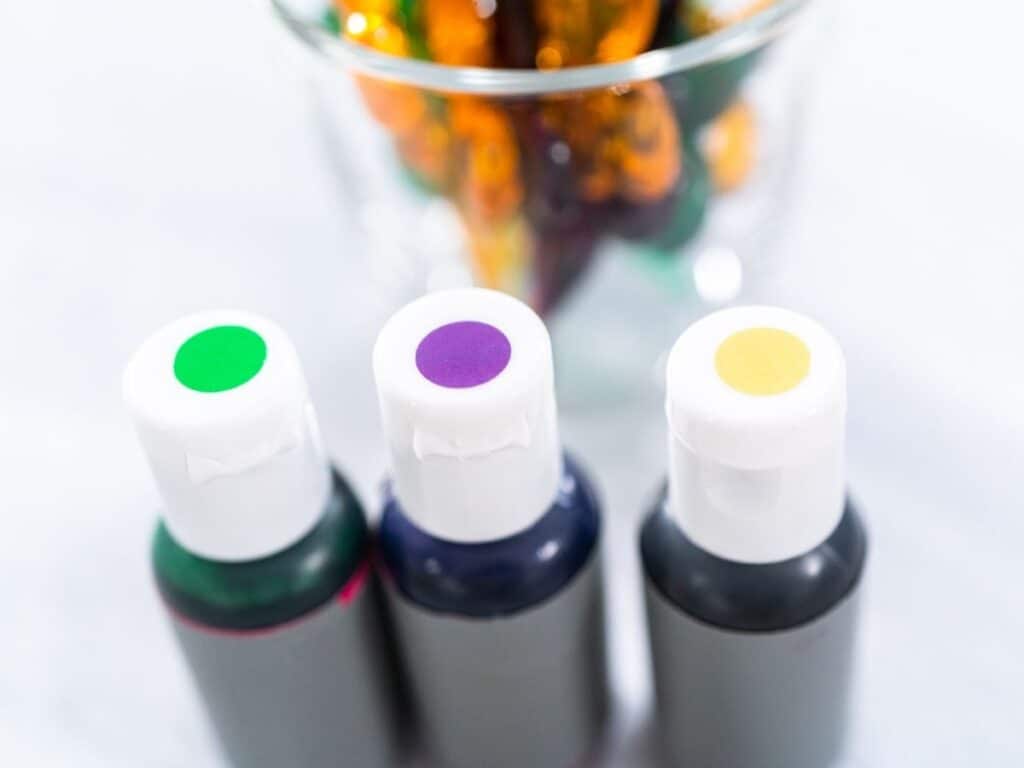
Whether you’re eating natural fruits and vegetables or canned and processed foods, chances are there’s a lot of food coloring you consume on a daily basis. While most natural foods will not shed off their dye easily, others like berries, beet, tea, mangosteen, cherries, and red grapes will leave a stain on your hand when you touch them. Some of these stains are not easy to wash off with just soap and water.
But food coloring also is an essential part of processed foods. Your tomato paste is that red because of the dye added to the paste during processing. The same goes for the orange juice that you drink every morning. If you squeeze an orange, its juice is pale yellow at best and looks nothing like the appetizing bright orange color of the orange juice you buy at the grocery store.
The main purpose of these dyes and pigments is to make the food look more appealing, and replace the loss of color during food processing. Artificial colors also help distinguish candy, with each color representing a different flavor and so on. The brighter the color of the food, the more delicious it looks. Since ripe fruits have bright colors, our brains are conditioned to rely mainly on color to choose the best food to eat.
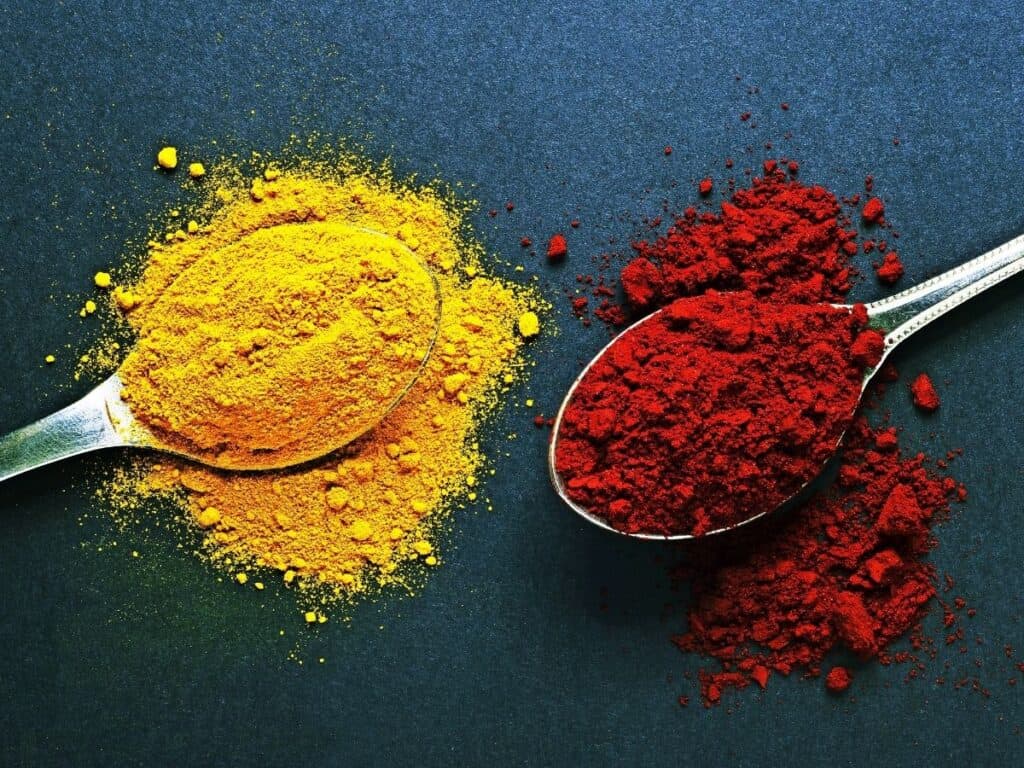
How to Remove Food Coloring Stains from Skin
Our skin is a resilient shield that acts as the first line of defense against the elements and pathogens in the environment. It’s also full of millions of pores and follicles. These pores and follicles absorb dyes and pigments faster than a cotton towel. And much like a towel, once the coloring stain dries, your skin won’t lose it any time soon. You’ll need to treat it repeatedly with a cleaning solution.
The following six ways to remove food coloring stains from the skin are interchangeable. They’re all readily available around the house. So if you’re short on one item, you can look for another material to get the job done. Patience is of the essence, especially with dry stains. But one thing to remember is to go easy on the scrubbing. Your skin is alive, and scrubbing too hard can cause pain and even rashes.
Vinegar and Baking Soda
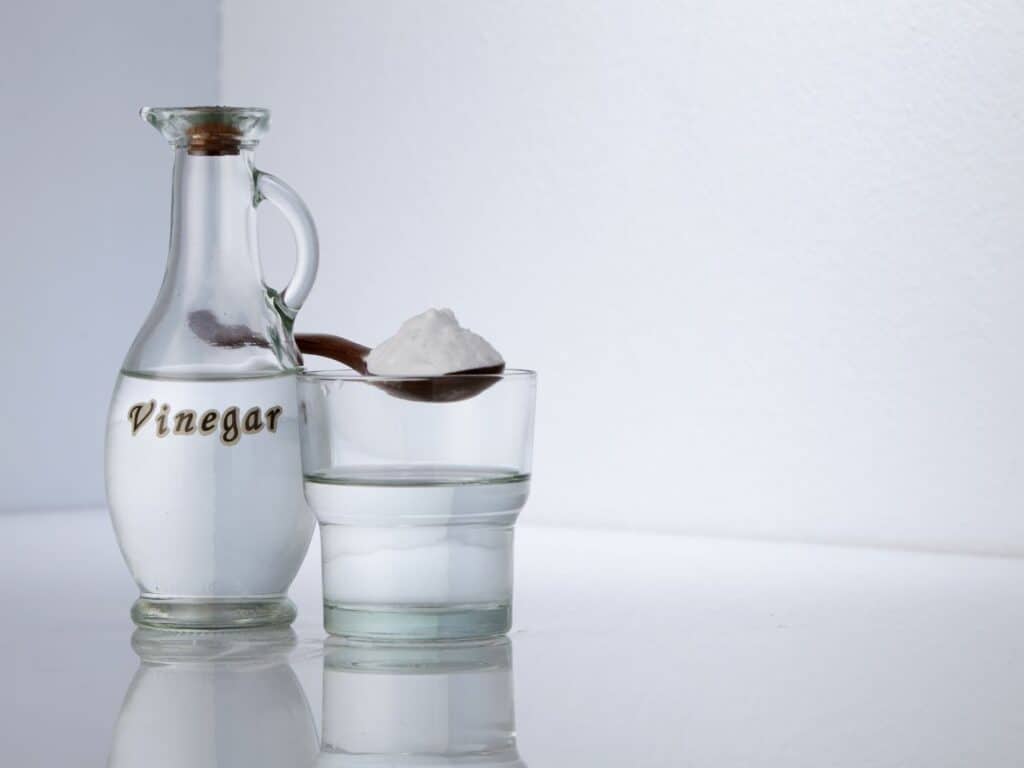
If you’re familiar with stains and how to remove them, then chances are you have already used the white vinegar and baking soda combo before. This magical cleaning solution works with all kinds of stains on fabrics and other materials. But did you know that you can also use it to remove food coloring stains on your skin? As usual, you shouldn’t pre-mix the two ingredients since the chemical interaction is short-lived.
- Start by washing the coloring stain with warm water and soap. This will remove any excess coloring and also remove the grease and sweat on the skin to give the vinegar and baking soda direct access to the stain itself.
- Dip a clean washcloth or sponge in distilled white vinegar and rub the stain vigorously on the skin. If the vinegar is too strong and stings, add a few tablespoons of water to dilute it.
- Replace the sponge with a clean one if it gets stained. Scrubbing with a stained sponge will just spread out the stain.
- Rinse under warm running water and make sure your skin is wet.
- Sprinkle a thin layer of baking soda on the wet stain. Don’t go above one inch of baking soda.
- The baking soda will form a paste when it touches the water. Press it gently on the stain and leave it for 2 minutes.
- Wash the baking soda off the skin under running water and examine the stain.
- Repeat steps 2 to 7 until you’re satisfied with the results.
Alcohol
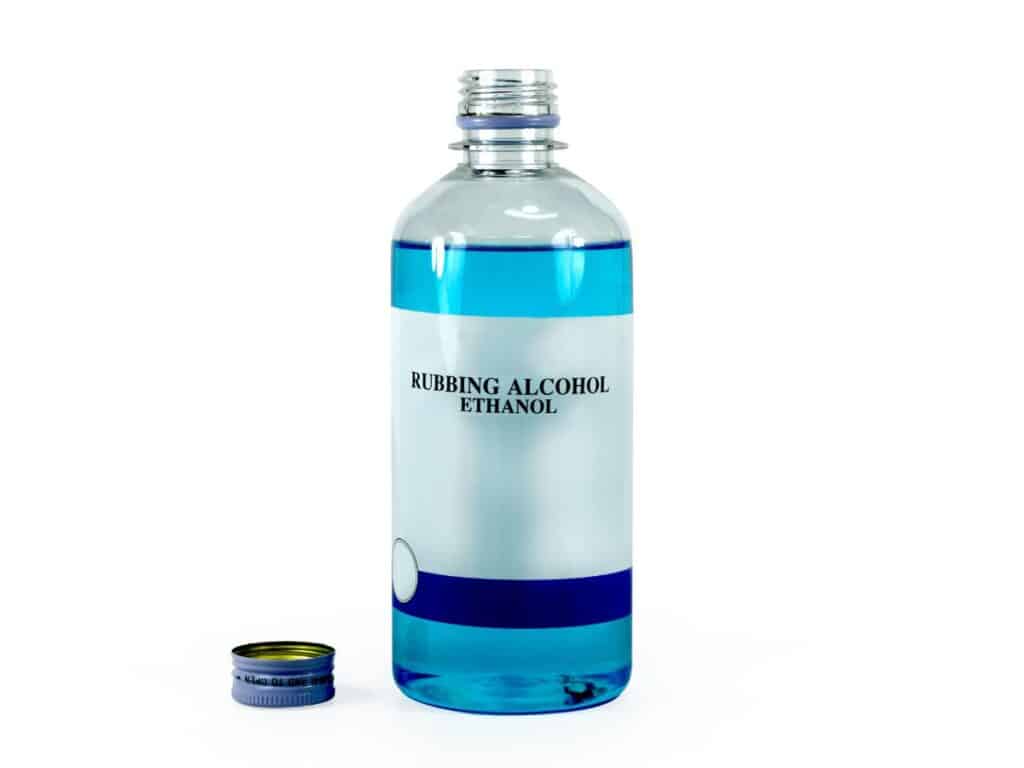
These days alcohol is in almost every medicine cabinet. I’m not talking about rubbing alcohol. Hand sanitizers are part of our daily lives, and they contain high doses of alcohol. Alcohol is quite effective at removing all kinds of food coloring stains from the skin. It works against fresh stains as well as dry ones. Even dyes and pigments in processed foods and condiments are easy to get rid of with hand sanitizer.
While both rubbing alcohol and hand sanitizer work for most stains, you should be wary of using rubbing alcohol on stains near the eyes or the mouth. Hand sanitizer is also recommended for use with people with sensitive skin and children. These sensitive areas should be treated with hand sanitizer since it’s more refined and contains less harsh chemicals than rubbing alcohol.
- Wash off the excess coloring stain with warm water and soap. You need the skin to be clean for the alcohol to work directly on the stain.
- Use a cotton ball to soak up the hand sanitizer or rubbing alcohol and rub the stain off repeatedly.
- When the cotton ball is covered with the stain, replace it with a new one.
- Rinse under warm running water and repeat as necessary.
I wrote a guide on cleaning with alcohol and detergent that may interest you.
Shaving Cream
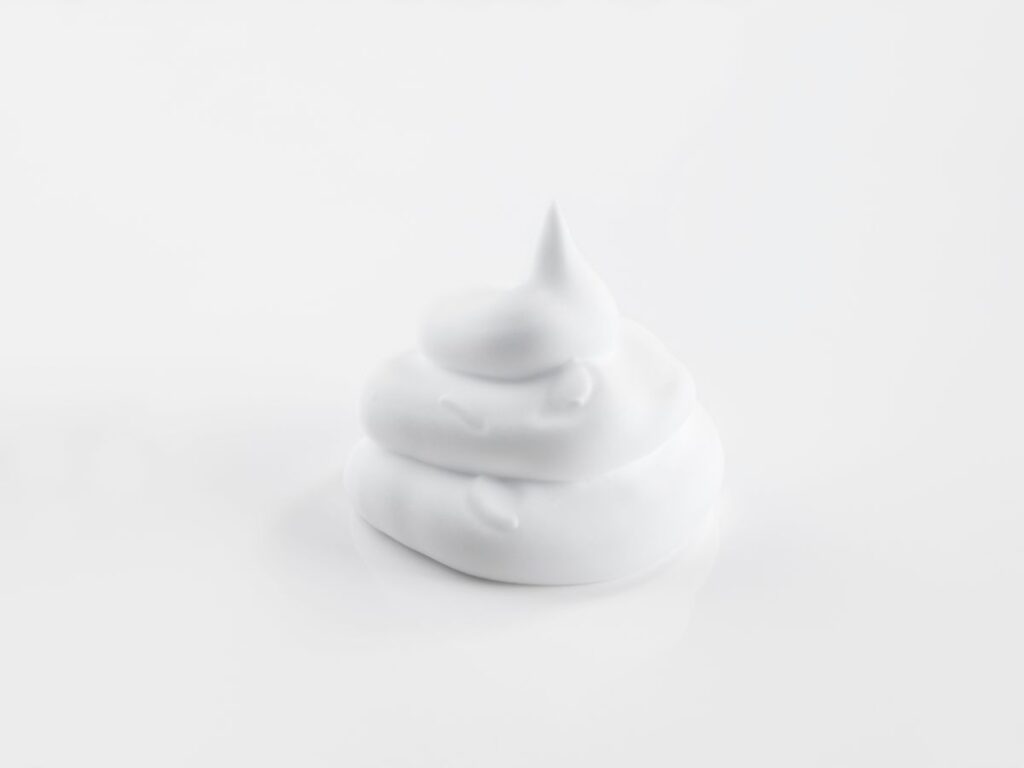
Shaving cream does more than make the skin supple and elastic before you apply the razor to it. It also works on the follicles and weakens them thanks to the peroxide in the shaving gel. You can use the same product to get rid of tough food coloring stains absorbed by the skin. I recommend using a shaving gel since it’s easier to rub into the stain, and you can control how much of the material to apply. (shaving cream links are paid links to Amazon)
- Wash the stain under warm running water and apply some liquid soap to get rid of the sweat on the skin.
- Lather the shaving gel on the stain. Press it into the skin with your fingers making sure to create decent foam. Allow it 5 minutes for the peroxide to work on the stain.
- Rinse under running water and repeat until all traces of the stain are gone.
Toothpaste
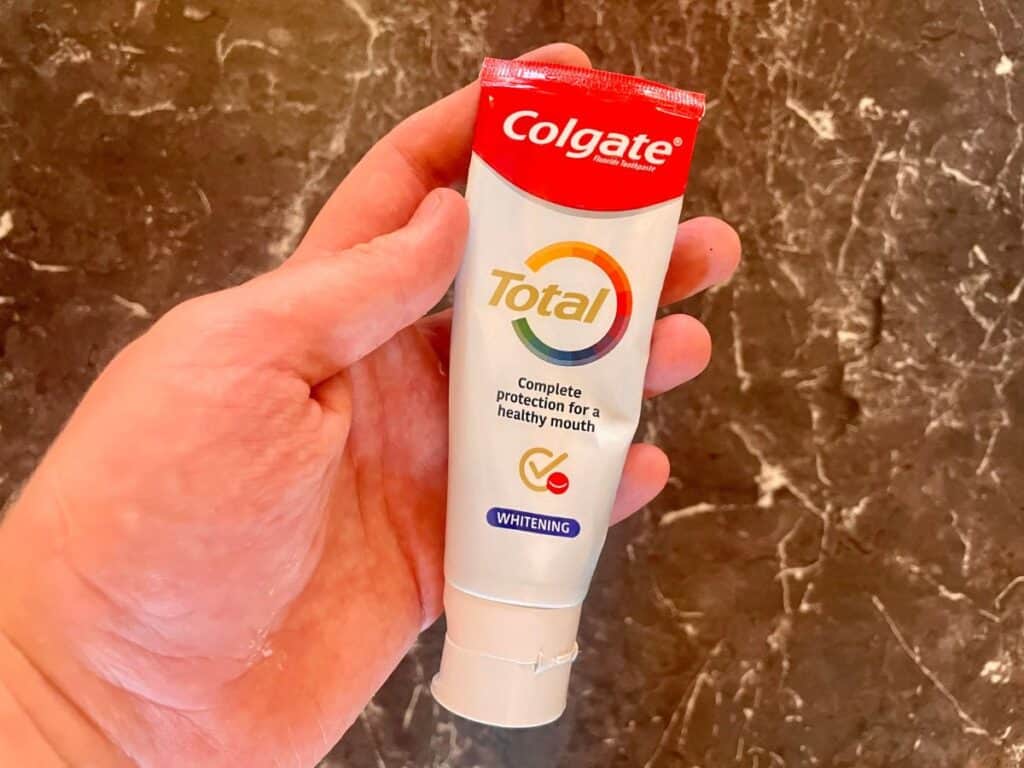
Toothpaste seems like the logical option to choose when removing food coloring stains off the skin. Because that’s the main job of toothpaste. It is designed to remove gum and teeth stains, including coffee and tea stains. But using it outside of the mouth area is not quite popular since toothpaste contains fluoride, menthol, and other compounds that can leave a burning sensation on the skin.
But you can use toothpaste on food coloring stains on the skin as long as you’re using a whitening or non-gel toothpaste (Amazon paid link). These varieties are much milder than gel toothpaste and will not burn or sting the skin, even in sensitive areas on the face.
- Wash the excess stain and sweat off the skin under running water and soap. Rinse well.
- Apply a few squirts of the toothpaste to the stain and rub it in with your fingers. Let it sit for a couple of minutes.
- If the toothpaste dries out, add a few more squirts.
- Rinse under running water and repeat the process until you’re satisfied with the results.
- Don’t let the toothpaste sit on the skin for more than two minutes at a time.
Salt and Lemon
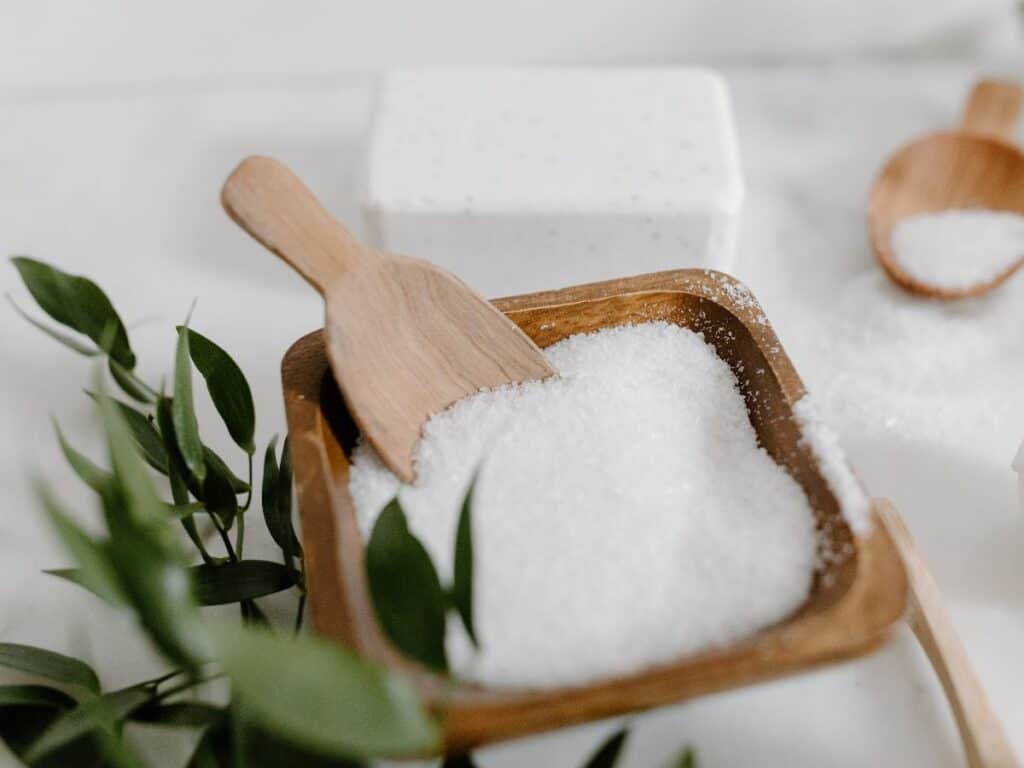
Salt works on stains in the same way baking soda interacts with them. They both absorb the stain and work effectively even on dry food coloring stains. If you’re out of baking soda and vinegar, replace them with salt and lemon. But while you shouldn’t mix baking soda with vinegar before applying them, you can mix salt and lemon any way you like. If you don’t have lemon, use apple cider vinegar instead.
- Wash the food coloring stain with running water and soap. Rinse well.
- Add 3 tablespoons of salt into a bowl and pour in 5 tablespoons of lemon juice or apple cider vinegar. Mix well with a spoon until the liquid thickens.
- Scoop a few drops of the liquid with your fingers and apply them to the food coloring stain. Rub it in gently to allow the skin to absorb it.
- As you rub the cleaning mixture, the stain will fade. Keep rubbing until the coloration is totally gone. Wash thoroughly under running water.
- If the treated area on the skin turns red, apply any moisturizing cream or petroleum jelly to soothe the abrasive impact of the salt and lemon mixture.
Baby Oil
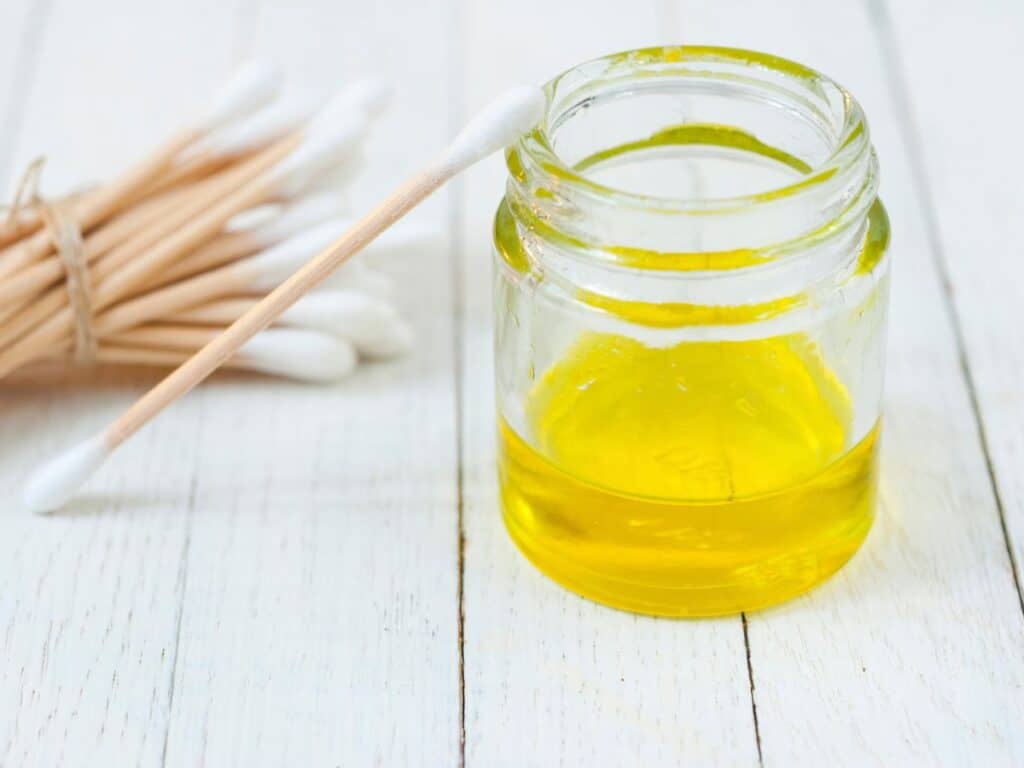
Baby oil moisturizes the skin and replaces the natural oil we lose during bathing and showering. As such, baby oil penetrates the skin and breaks down dry food coloring stains and pigments, making it easier for you to scrub them off with a sponge or a cotton ball. You can use baby oil if your skin is sensitive to any of the above cleaning mixtures. However, this mild nature requires more scrubbing than other solutions.
- Wash the stain, as usual, to remove any grease, sweat, or body oil on the skin with soap and water, then rinse thoroughly.
- Dip a cotton ball in baby oil and rub it over the food coloring stain. Let the skin soak up the baby oil, then scrub off the stain.
- When the cotton ball becomes covered with the stain, replace it with a fresh cotton ball and continue to scrub.
- If the skin absorbs baby oil, squirt a few drops on the stain and keep scrubbing.
- Depending on the stain, it might take some time before you manage to remove all traces of the stain.
Tips to Remove Food Coloring Stains from Skin
While the above solutions can have mixed results depending on the type of food coloring stain you have to remove, they can also leave behind a stinging sensation due to the abrasive nature of the chemical solutions. Follow these tips to avoid such pitfalls.
- Always wash the cleaning solutions thoroughly off the skin under running water.
- If you feel the skin getting warm, remove the solution immediately and wash with water. Apply a moisturizer to soothe the skin and try a different method from the list above.
- Don’t scrub your skin too hard. Be gentle and patient to avoid damaging the skin.
- Change the sponge or cotton ball if it gets stained.
- Treat dry skin with body lotion or vaseline to counter the effect of the cleaning mixtures.
Conclusion
Food coloring is an essential ingredient in many canned foods. And if you cook or bake at home, there’s a chance you’ll be using a lot of dyes and pigments that could leave stains on your skin. Avoid such stains by wearing gloves and long sleeves. And don’t let children apply food coloring since that can get messy pretty quickly.
To remove these tough stains, use any material around the house such as lemon and salt, baking soda and vinegar, or toothpaste. Harsh chemicals in some of these products can be abrasive on the skin. Always treat the area with body lotion, moisturizers, or vaseline after removing the food coloring stains.
Next, you can check out my guide on how to remove yellow food stains.

I’m an expert wardrobe organizer and a bit of a clean freak. I created this website and its YouTube channel to share practical guides about laundry and organizing. My teachings have been featured in multiple large news publications, and I’ve self-published two wardrobe organizing books and an entire course on the subject.
